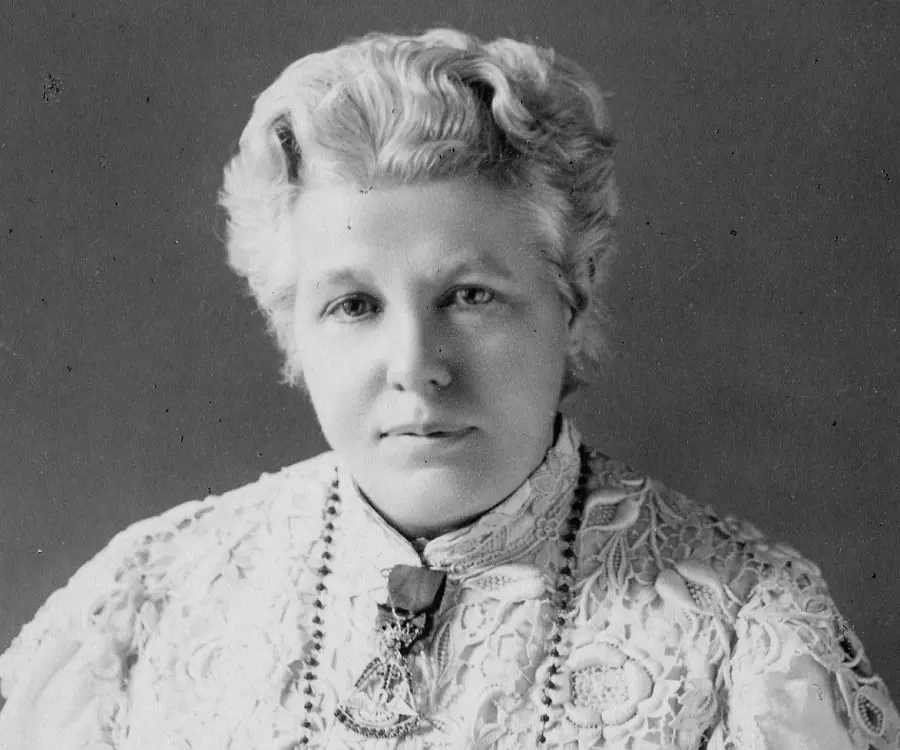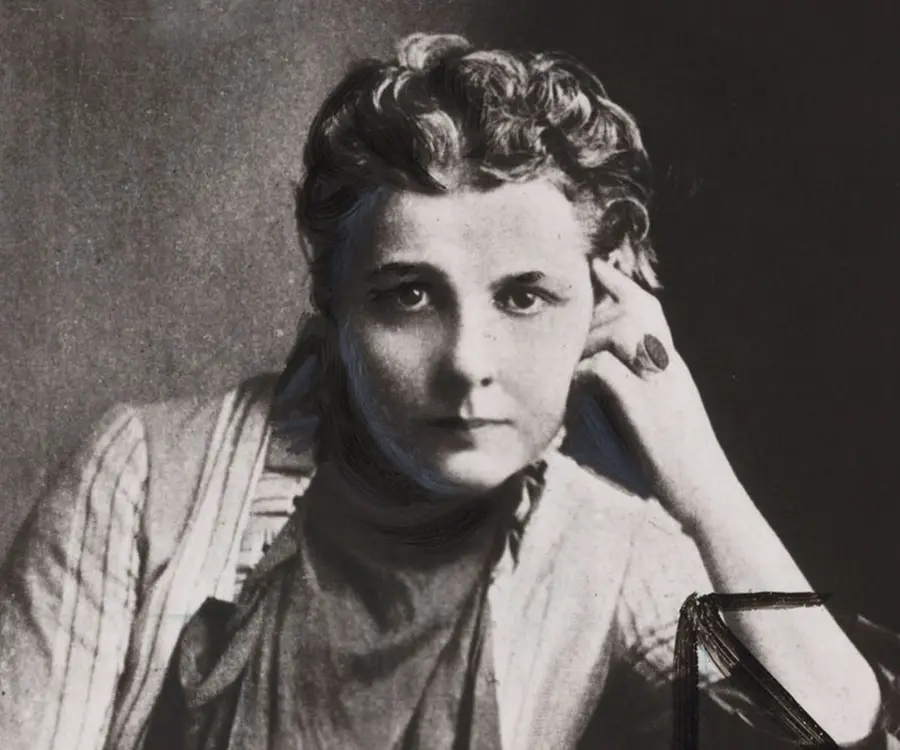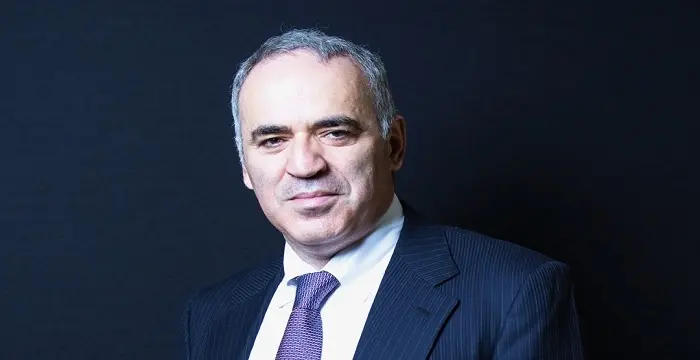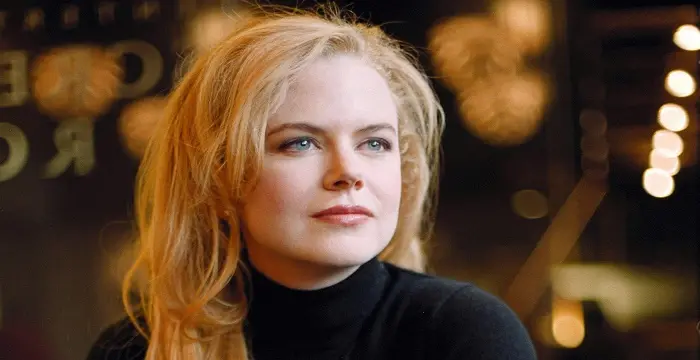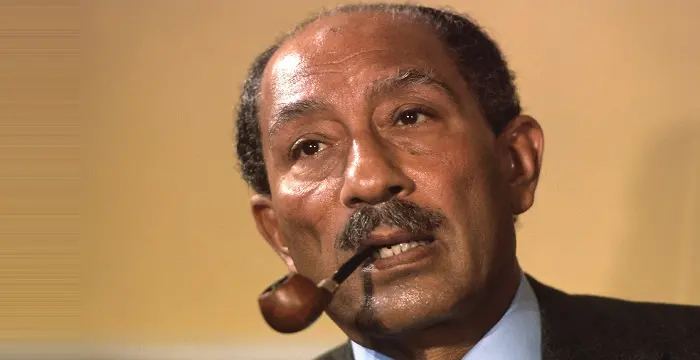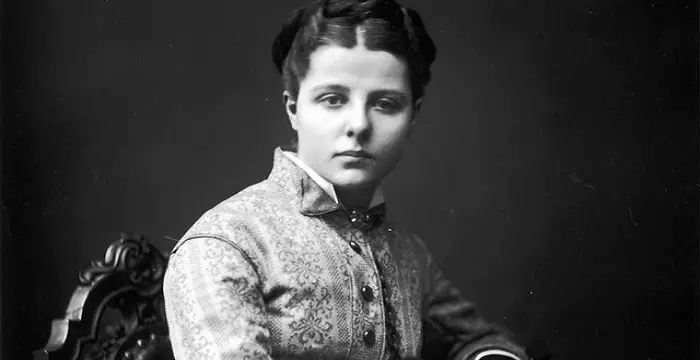
Annie Besant - Member of the London School Board, Career and Childhood
Annie Besant's Personal Details
Annie Besant was a women’s rights activist, theosophist and Indian nationalist
| Information | Detail |
|---|---|
| Birthday | October 1, 1847 |
| Died on | September 20, 1933 |
| Nationality | British |
| Famous | Feminists, Humanitarian, Political Activists, Leaders, Member of the London School Board |
| Spouses | Frank Besant |
| Known as | Annie Wood |
| Childrens | Arthur Digby Besant, Mabel Besant-Scott |
| Universities |
|
| Founder / Co-Founder |
|
| Birth Place | Clapham |
| Religion | Hinduism |
| Gender | Female |
| Sun Sign | Libra |
| Born in | Clapham |
| Famous as | Member of the London School Board |
| Died at Age | 85 |
Annie Besant's photo
Who is Annie Besant?
Annie Besant was a political reformer, women’s rights activist, theosophist and Indian nationalist. She was the leading women figure of the late 19th and early 20th century who actively fought for different causes such as secularism, birth control, Fabian socialism, women's rights and workers' rights. Besant, early in her life, switched to anti-religious views which led her to work tirelessly as a reformist and secularist. She constantly questioned the status of Church of England and demanded for a secular state through her write-ups, columns and public speeches. Besant first came to limelight with her birth-control campaign alongside reformer Charles Bradlaugh. Soon, she became a prominent Fabian socialist but shortly afterwards converted to theosophy. As a member and later President of the Theosophical Society, Besant helped to spread Theosophical beliefs around the world, notably in India. In 1893, she first visited India and soon became involved in the Indian national struggle for freedom. Till the end of her life, she actively campaigned for Indian independence and causes of theosophy.
// Famous Political Activists
Susan Sontag
Susan Sontag is an American critical essayist, cultural analyst, novelist, political activist, filmmaker and playwright of international repute. Read on to find out more about her childhood, career, profile and timeline.
Serj Tankian
Serj Tankian is a famous American singer-songwriter and member of the band, ‘System of a Down’. This biography profiles his childhood, music career, life, achievements and timeline.
Garry Kasparov
Garry Kasparov is a Russian chess Grandmaster considered by many to be the greatest chess player of all time. This biography of Garry Kasparov provides detailed information about his childhood, life, achievements, works & timeline.
Childhood & Early Life
Annie Besant was born as Annie Wood on October 1, 1847 in Clapham, London in a middle-class family of Irish descent.
Following the death of her father, young Annie was kept under the care of her mother’s friend Ellen Marryat due to the family’s lack of financial means.
Under the guardianship of Marryat, Annie secured good education. During her early days, she travelled to Europe. These expeditions shaped much of her future thinking and her outlook.
Later Life
It was after her marriage to Anglican clergyman, Frank Besant that Annie Besant developed a political bent of mind. Her friendship with English radicals and Manchester Martyrs of the Irish Republican Fenian Brotherhood shaped much of her political thinking.
Post marriage, Besant explored her writing skills and started penning short stories, articles and books for children.
Over the course of her marriage, she became more and more radical in her views. She began to question her faith and stopped attending the Communion as she no longer believed in Christianity.
The conflicting opinion between Annie and Frank led the couple to part ways in 1873. Eventually, she left for England with her daughter Mabel. She undertook part-time study at the Birkbeck Literary and Scientific Institution.
She became widely recognized for her radical views, as she openly expressed her support for freedom of thought, women’s right, secularism, birth control, Fabian socialism and worker’s rights
She became a leading member of the National Secular Society (NSS) and the South Place Ethical Society along with Charles Bradlaugh. Soon enough, she began questioning conventional thinking as a whole.
Besant started penning articles that attacked the Church. She openly condemned the status of Church citing it as a state-sponsored faith. In 1870s, she began writing a small weekly column in the NSS newspaper, National Reformer. Both NSS and Besant had singular goal – to establish a secular state and end the special privilege enjoyed by Christianity.
Being blessed with excellent oratory skills, she became a public speaker. She travelled far and wide, giving lectures and speaking on day-to-day issues. Through her public speeches, she demanded for improvement, reform and freedom from the government.
While Besant had gained a popular status through her write-ups and public speeches, it was when she published a book on birth control, in association with Charles Bradlaugh that she became a household name. The book argued the need to limit the number of children in a working class family in order to stay happy. Highly controversial, it was condemned by the Church. The duo was sent on a trial for obscenity but was eventually acquitted.
Besant political thinking drifted as she became more and more influenced by the Socialist organizations. She developed close contact with Irish Home Rulers, speaking in favour of Irish peasantry and rebuking landowners. During this time, she befriended George Bernard Shaw, an Irish author. Eventually, she started writing and giving public speeches on Fabian socialism.
In 1887, she appeared as a public speaker at the protest held at Trafalgar Square held by London unemployed group. The day is recorded in history as Bloody Sunday, as it led to death and arrest of hundreds of people.
In 1888, she became actively involved in the London matchgirls strike. The strike came into effect, following poor work conditions and meagre pay being provided to young women in Bryant and May’s match factory. The protest earned great public support and eventually led to improved working condition and heightened pay.
In 1888, Besant joined Marxism and eventually became its best speaker. Same year, she was elected to the London School Board. During this time, she also became actively involved in the London Dock Strike. Much like the matchgirls strike, it too gained much public support.
In 1889, she converted to Theosophy. As a member of the Theosophical society, she travelled to India in 1893. She actively supported the Theosophical movement in addition to supporting Indian freedom struggle and independence.
In 1908, she served as the President of the Theosophical Society. Under her leadership, she stressed on the teachings of the Aryavarta. She also opened a new school for boys, The Central Hindu College.
In 1916, together with Lokmanya Tilak, she launched the All India Home Rule League. Modelled on the lines of Irish nationalist practices, it became the first political party of the country that demanded a governmental change. Unlike the Indian National Congress, the league worked all through the year.
She worked relentlessly with Pandit Madan Mohan Malviya, to establish a common Hindu University at Varanasi. Thus, Banaras Hindu University was established in October 1917, with Besant’s initiated Central Hindu College as its first constituent college.
Alongside her theosophical activities, she served as the first woman President of the Indian National Congress in 1917. She became the editor of the ‘New India’ newspaper and voiced against the British rule in the country.
In 1917, she was arrested for protesting against British rule. Interestingly, different Indian nationalist groups from all over the country protested against her arrest which eventually led to her release. Her release strengthened Indian belief of freedom from British Raj and self-governance.
Till the last days of her life, she actively promoted and campaigned for Indian independence and for the causes of theosophy
Major Works
Besant along with Chares Bradlaugh published a book by birth control campaigner Charles Knowlton. This marked her rise to prominence as the book created a rage amongst the public. Having highly controversial content, it was condemned by the Church
Besant actively worked for the cause of worker’s right and women’s rights. She played a crucial role in the London matchgirls strike of 1888 and London Dock Strike. In both the cases, she helped alleviate the standard of working and assisted in increased pay.
She served as the President of the Theosophical Society. During her presidency, she became actively involved in the Indian struggle for independence. She founded the Home Rule League. Additionally, she initiated the Banaras Hindu University. Besant served as the first woman President of the Indian National Congress in 1917.
Personal Life & Legacy
In 1867, Annie married an evangelical Anglican, Frank Besant. Frank was employed as a clergyman.
Following Frank Besant’s appointment as the vicar of Sibsey, the couple moved to Sibsey, Lincolnshire. They were blessed with two children, Arthur and Mabel.
Annie and Frank’s marriage did not last long due to their polarized opinions. The two had major conflicts over finances, political and religious beliefs and freedom. They separated in 1873.
Post the publication of the scandalous book on birth control, she lost custody of her children as Frank Besant proved in court that she was unfit to take care of them.
After her divorce, Besant developed a close friendship with prominent politicians including Charles Bradlaugh, George Bernard Shaw and Edward Aveling.
During her Presidency of Theosophical Society, she served as the legal guardian of Jiddu Krishnamurti and his younger brother Nityananda. Her bond with Jiddu Krishnamurti grew so strong that he eventually considered her as his surrogate mother.
In 1931, she became severely ill. She breathed her last on September 20, 1933 in Adyar, Madras Presidency, British India. Her body was cremated.
Posthumously, a neighbourhood near the Theosophical Society in Chennai is named after her, Besant Nagar. A school started by her contemporaries has been renamed Besant Hill School in her honour.
// Famous Humanitarian
Joyce Meyer
Joyce Meyer is a Christian author and speaker. This biography provides detailed information about her childhood, life, achievements, works & timeline
Swami Vivekananda
Swami Vivekananda was the chief disciple of Sri Ramakrishna, and was responsible for awakening India spiritually. Check this biography to know in detail about his life, profile and timeline.
Nicole Kidman
Nicole Kidman is one of the most talented actors that the Hollywood film industry can boast of. Browse through this biography to get detailed information regarding her life, childhood, profile & timeline
Annie Besant biography timelines
- // 1st Oct 1847Annie Besant was born as Annie Wood on October 1, 1847 in Clapham, London in a middle-class family of Irish descent.
- // 1867In 1867, Annie married an evangelical Anglican, Frank Besant. Frank was employed as a clergyman.
- // 1873The conflicting opinion between Annie and Frank led the couple to part ways in 1873. Eventually, she left for England with her daughter Mabel. She undertook part-time study at the Birkbeck Literary and Scientific Institution.
- // 1873Annie and Frank’s marriage did not last long due to their polarized opinions. The two had major conflicts over finances, political and religious beliefs and freedom. They separated in 1873.
- // 1887In 1887, she appeared as a public speaker at the protest held at Trafalgar Square held by London unemployed group. The day is recorded in history as Bloody Sunday, as it led to death and arrest of hundreds of people.
- // 1888In 1888, she became actively involved in the London matchgirls strike. The strike came into effect, following poor work conditions and meagre pay being provided to young women in Bryant and May’s match factory. The protest earned great public support and eventually led to improved working condition and heightened pay.
- // 1888In 1888, Besant joined Marxism and eventually became its best speaker. Same year, she was elected to the London School Board. During this time, she also became actively involved in the London Dock Strike. Much like the matchgirls strike, it too gained much public support.
- // 1888Besant actively worked for the cause of worker’s right and women’s rights. She played a crucial role in the London matchgirls strike of 1888 and London Dock Strike. In both the cases, she helped alleviate the standard of working and assisted in increased pay.
- // 1889 To 1893In 1889, she converted to Theosophy. As a member of the Theosophical society, she travelled to India in 1893. She actively supported the Theosophical movement in addition to supporting Indian freedom struggle and independence.
- // 1908In 1908, she served as the President of the Theosophical Society. Under her leadership, she stressed on the teachings of the Aryavarta. She also opened a new school for boys, The Central Hindu College.
- // 1916In 1916, together with Lokmanya Tilak, she launched the All India Home Rule League. Modelled on the lines of Irish nationalist practices, it became the first political party of the country that demanded a governmental change. Unlike the Indian National Congress, the league worked all through the year.
- // 1917Alongside her theosophical activities, she served as the first woman President of the Indian National Congress in 1917. She became the editor of the ‘New India’ newspaper and voiced against the British rule in the country.
- // 1917In 1917, she was arrested for protesting against British rule. Interestingly, different Indian nationalist groups from all over the country protested against her arrest which eventually led to her release. Her release strengthened Indian belief of freedom from British Raj and self-governance.
- // 1917She served as the President of the Theosophical Society. During her presidency, she became actively involved in the Indian struggle for independence. She founded the Home Rule League. Additionally, she initiated the Banaras Hindu University. Besant served as the first woman President of the Indian National Congress in 1917.
- // Oct 1917She worked relentlessly with Pandit Madan Mohan Malviya, to establish a common Hindu University at Varanasi. Thus, Banaras Hindu University was established in October 1917, with Besant’s initiated Central Hindu College as its first constituent college.
- // 1931 To 20th Sep 1933In 1931, she became severely ill. She breathed her last on September 20, 1933 in Adyar, Madras Presidency, British India. Her body was cremated.
// Famous Leaders
Edi Rama
Edi Rama is the current Prime Minister of Albania. Check out this biography to know about his childhood, life, achievements, works & timeline.
Tecumseh
Tecumseh was a Native American leader of the Shawnee clan. This biography profiles his childhood, life and timeline.
Khalifa bin Zayed Al Nahyan
Sheikh Khalifa bin Zayed Al Nahyan is the current President of the United Arab Emirates (UAE). Check out this biography to know about his birthday, childhood, family life, achievements and fun facts about him.
Anwar Sadat
Anwar Sadat was the third President of Egypt and has been awarded the Nobel Prize for his peace initiatives. To know more about his childhood, career, profile and timeline read on the following biography.
Leo Varadkar
Cam Leo Varadkar is the current Taoiseach—the Prime Minister—of the Republic of Ireland. Check out this biography to know about his childhood, family life, achievements and other facts about his life.
Swami Vivekananda
Swami Vivekananda was the chief disciple of Sri Ramakrishna, and was responsible for awakening India spiritually. Check this biography to know in detail about his life, profile and timeline.
Annie Besant's FAQ
What is Annie Besant birthday?
Annie Besant was born at 1847-10-01
When was Annie Besant died?
Annie Besant was died at 1933-09-20
Where was Annie Besant died?
Annie Besant was died in Adyar
Which age was Annie Besant died?
Annie Besant was died at age 85
Where is Annie Besant's birth place?
Annie Besant was born in Clapham
What is Annie Besant nationalities?
Annie Besant's nationalities is British
Who is Annie Besant spouses?
Annie Besant's spouses is Frank Besant
Who is Annie Besant childrens?
Annie Besant's childrens is Arthur Digby Besant, Mabel Besant-Scott
What was Annie Besant universities?
Annie Besant studied at Birkbeck, University of London
Which company or organization was founded by Annie Besant?
Annie Besant was the founder/co-founder of Central Hindu School, National High School, Vasanta College for Women
What is Annie Besant's religion?
Annie Besant's religion is Hinduism
What is Annie Besant's sun sign?
Annie Besant is Libra
How famous is Annie Besant?
Annie Besant is famouse as Member of the London School Board

